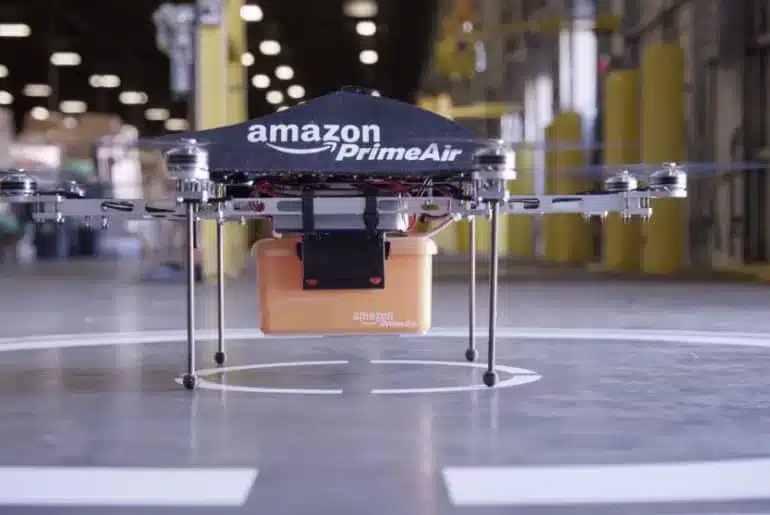Ecommerce is an environment that’s constantly changing and upgrading as technologies improve and companies battle against each other to win a greater share of the pie.
If you’ve been keeping up with ecommerce analytics, you know that the trends show that growth and change take place every year. Regardless of what kind of ecommerce business you are about to start, it’s safe to say that the future of ecommerce looks bright and promising.
Although the future of ecommerce can’t be predicted in full, there is enough evidence to predict that ecommerce will flourish, and various social media platforms, like Instagram and Facebook, will become even more crucial in the ecommerce world.
Ecommerce hyper-personalisation predictions
Humans crave physical contact with other people, so it’s no surprise that ecommerce is deemed as slightly less intimate and slightly less about personal experience than retail shopping. Ecommerce shops don’t have someone who can help with our browsing and recommend products to us face-to-face.
This is why certain ecommerce businesses will try to imitate this experience by making websites and their email communications more personal and appealing to each individual. One of the ways ecommerce shops can become more personal for customers is by adopting AI hyper-personalisation software, which monitors customers’ preferences and tailors their product selection based on the things that are most relevant to them at that precise moment. You’re already familiar with a similar feature, which is the ‘recommended products’ section in most online stores that gives customers recommendations based on their buying history and impressions.
Ecommerce delivery drones
Drones are essentially flying robots that can be either manually controlled or programmed to fly on their own. So how exactly do flying robots correlate to ecommerce, you might ask?
Well, some people predict that, in the future, drones will be able to replace order clerks by delivering orders to customers. As you can imagine, drones are faster than humans. This will significantly cut the delivery time, so orders will be delivered faster than ever before. This will certainly help businesses and customers alike, which is why many ecommerce businesses are excited about this development. The costs will be much lower for companies and people will get what they need in a shorter time.

Ecommerce social media shopping
Social media platforms play a large role in our lives today. Many brands are aware of this fact, so they shift their marketing towards social media sites to reach a larger number of people. The number of sponsored Instagram posts is increasing every year.
So how can these statistics influence ecommerce? Knowing that millions of people use these apps every year is an advantage for ecommerce business owners. People are buying via social media every day, so there’s no better time to invest in social media marketing and selling than now.
Ecommerce tracking
Since retail ecommerce sales are expected to reach $4.8 trillion by next year, now is the time to think of ways you can transfer the face-to-face retail experience to ecommerce. We’ve already discussed how you can customize the customer’s experience, but this step also entails perfecting your online tracking experience.
There are plenty of apps that can help you with this, like Swydo, Megalytic, and Google Sheets.
Ecommerce pop-up shops
If you’re in the ecommerce business, then you’re already aware of the fact that not having a brick-and-mortar store can be a disadvantage. After all, some people prefer buying in person, so by not having a pop-up shop to go along with your ecommerce business, you’re potentially missing out on promising customers.
What can we say about the future of ecommerce in terms of pop-up shops?
Well, one possible way of handling this issue is by creating a pop-up shop to accompany the products you’re selling online. You will have to think about a lot of factors that can influence the cost of your pop-up shop, like the store’s location for instance, but you will be attracting more customers than ever. If you want a detailed article on all the potential costs, check out this one on Parasol’s Projects.
When deciding whether or not investing in a pop-up shop will pay off, make sure you take into account all the potential new customers who prefer shopping in physical stores.

Ecommerce using voice search
You’re probably already familiar with voice-enabled search assistants like Siri, or its Android equivalent – Bixby.
So, what does this have to do with ecommerce? Well, in terms of online shopping, there will be more and more people who are relying on Siri, Alexa, Google Assistant, or similar apps for shopping purposes. This means that you might have to alter your keywords as time goes on so that they’re by voice-based purchases.
Voice ecommerce is here to stay, especially as more and more voice-enabled search assistants are introduced into the mix.
Ecommerce AI Systems
We covered the role of drones in the future of ecommerce, but what about AI?
AI seems to be a hot topic nowadays. It’s no secret that many different kinds of businesses can profit from integrating AI, whether it results in helping the employees manage their tasks and time better or simply by making the customer’s experience a lot smoother.
Potential future AI assistants will be able to do many tasks, like taking care of any questions and concerns the customers have or simply dealing with the inventory and orders. As AI systems advance, the assistants will have the ability to take on different tasks, which is why certain people assume that AI will start dominating the ecommerce space.
Integrating AI in ecommerce sounds like a smart and profitable idea at first, but at what cost? Although this could result in a smoother and faster experience for the customers, a bigger issue arises: will AI replace humans to the point of resulting in fewer job opportunities? But this is a discussion for another time.
Sustainable ecommerce
As consumers become more environmentally aware, so will their need to support sustainable brands. So how does this translate to ecommerce?
Becoming more environmentally friendly can be accomplished in various ways, mainly by reduced waste packaging and more sustainable supply chains. Businesses can reduce the amount of waste they produce by simply choosing to opt for minimalistic packaging that uses more sustainable materials or fewer materials in general. The Harvard Business Review encourages companies to adopt various steps like implementing long-term sustainable goals and including low-tier suppliers.
Using renewable energy and trying to minimise the overall waste is also a part of the equation.
Another important part of sustainable ecommerce is the benevolent treatment of employees, which includes appropriate income and the right working conditions.
Measurements across all devices
Statistics show that four out of five Americans are online shoppers, and more than half of them are shopping using their mobile phones. With this knowledge in mind, how can business owners cater to mobile device users and make their shopping experience faster and easier?
This is the question business owners need to keep in mind when designing an ecommerce website or store. Since it’s no secret that customers tend to click out of sites that don’t seem to work well on their devices, making ecommerce websites mobile-friendly will result in greater customer satisfaction.
While you can’t predict the type of device where every single purchase comes from, you can optimise the sites you currently have to make them as mobile-friendly as possible.
Minimalistic and fast sites
Online shoppers want to access sites that have a fast loading time and a simple and easy-to-navigate design. Potential ecommerce customers will lean towards minimalistic designs that are efficient as opposed to overly complicated layouts that take a lot of time to navigate. So the focus shifts from aesthetics to functionality.
If there was a time to optimise the load time of your site, along with its design and layout, then this is it.
New visual and audio content will be introduced
As you know by now, one of the best ways to market your business is through content marketing integration. This can be done in many ways, like blogs, videos, and even memes. And we’re certain that this list will continue to grow as time passes. After all, memes, as we know them, didn’t exist a few years ago.
Not only is this a great way to inform your customers and expand their knowledge on a certain topic, but it also does wonders for your site traffic. You will need to devote a lot of time to researching the topics, introducing relevant keywords, and getting to know your audience, or you could hire a content writer to do all that for you.
Content marketing is extremely fruitful and cost-effective. But don’t take our word for it – here’s what statistics say. Content marketing not only gets more clicks, but it’s also less expensive than traditional marketing.
Ecommerce attribution modelling
Attribution modelling helps businesses analyze the value of different channels they use for marketing purposes so they can determine which channel is the most beneficial for marketing.
By investing in the channels that make the most profit, ecommerce businesses can grow and flourish. That being said, you will need to combine different types of channels that will attract larger audiences. A good tool to use that can help you determine all this is Google Analytics.
If you’re into ecommerce, you are aware that the ideal attribution model doesn’t exist just yet. It’s up to us to wait for future models that will hopefully give us better and wider feedback and insights.
Image recognition turned product recognition
You might be familiar with image recognition. These apps, among other perks, allow you to unlock your phone by scanning your face. Recently, their function has been expanded. Nowadays, they are not only able to recognize your face, but they can also give you information on objects, assuming you point the camera at them or show them in a photo.
These apps can also read labels and barcodes, and we can now see how they might have an impact on ecommerce. They can tell you information on a certain item of clothing you like, or an electronic device, so you know where to buy it in a matter of seconds.
If you’re in the ecommerce business, it’s certainly wise to think about how this might influence your business (and profit).
What do the statistics say about the future of ecommerce?
If you’re unsure as to whether or not ecommerce is worth investing in, hopefully, these statistics will help you make a decision.
By the year 2023, it’s estimated that ecommerce purchases will rise from 14.1% to 22%. These estimations are highly optimistic and they show that ecommerce, as a business, is yet to reach its potential. Mobile ecommerce sales are also expected to rise, estimated to reach almost 2.91 trillion in 2020.
And how about 20 years from now? Statistics show that by the year 2040, almost 95% of all purchases will be via ecommerce, which is food for thought for all business owners.





